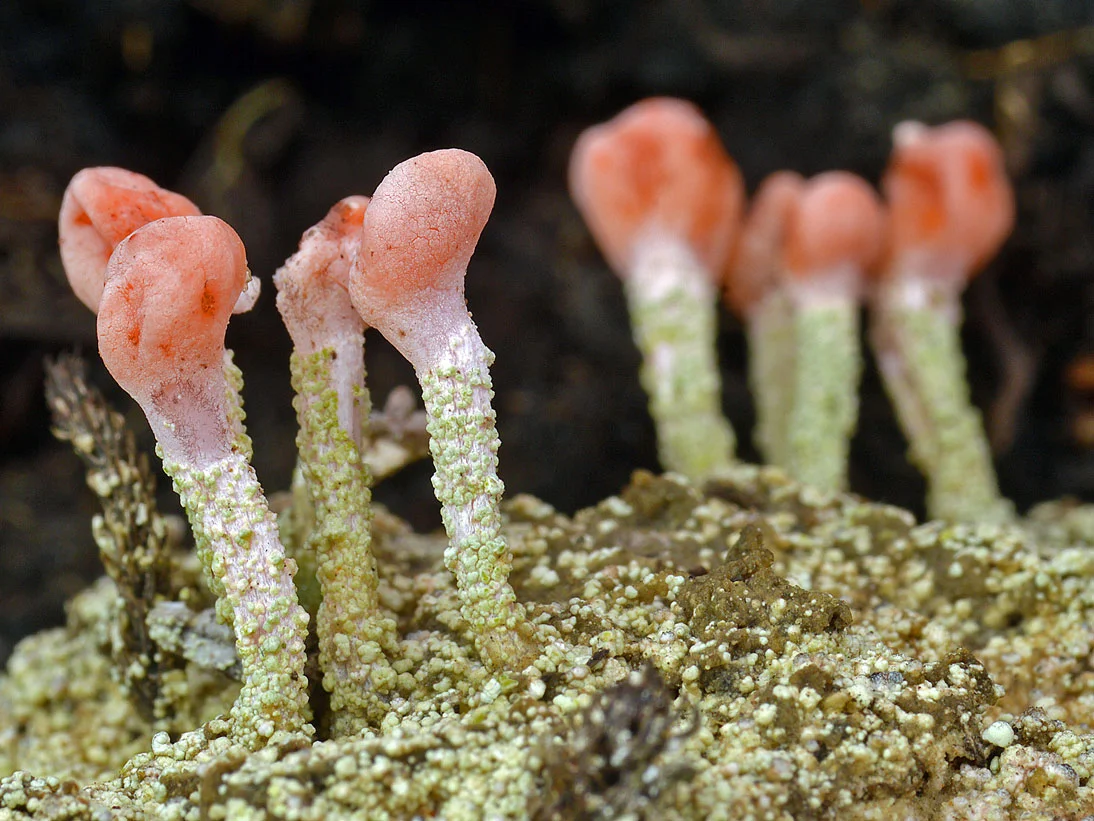Scientists from Bristol University, UK, have shown that the current diversity in the shape of fungi was the result of bursts of evolutionary radiation, following increases in multicellular complexity.
Creationists will need to ignore the fact that this explanation shows how the Theory of Evolution is fundamental to understanding biodiversity, in complete contrast to what their reality-denying disinformation sources have been claiming for the last half century.
Sadly, the team's published paper in Nature Ecology & Evolution is behind an expensive paywall, but the Bristol University press release explains their method and basic findings:
In other words, just at the TOE predicts, evolution proceeds at different rates with longer periods of relative stability, followed by a relatively short explosion of new species once a new characteristic has created new opportunities to exploit new ecological niches. In this case, it was the evolution of new forms of multicellular organisation which changed the game several times during fungal evolution. The fungi kingdom, of course, has single-celled and multicellular species with intermediates in the form of slime moulds.Most people recognise that fungi come in an assortment of shapes and sizes. However, these differences, often referred to as the disparity of a group, had never been analysed collectively.Prior to our analyses, we didn’t know how this variety was distributed across the different types of fungi. Which groups are the most varied when considering all parts of the fungal body plan? Which are the least? How has this variety accumulated and diminished through time? What has shaped these patterns in disparity? These are the questions we sought to answer.
The world of fungi is defined by bright colours, strange shapes, and stranger anatomies. Our analyses demonstrate that this breath-taking anatomical variety has evolved in bursts, driven by evolutionary increases in multicellular complexity.
Thomas J Smith, lead author
Bristol Palaeobiology Group
School of Earth Sciences
University of Bristol, Bristol, UK.
What they found was that fungal disparity has evolved episodically through time, and that the evolution of multicellularity in different fungi appears to open the door for greater morphological variety. They saw increases in disparity associated with both the emergence of the first multicellular fungi, and then the evolution of complex fruiting bodies such as mushrooms and saddles in dikaryotic species. These fungi are defined by the inclusion of a dikaryon, a cell with two separate nuclei, in their life cycles.
The main implication is that these results align with those of analyses of animal disparity. Both kingdoms present clumpy distributions of anatomical variety which have evolved intermittently through time.
The next step is to combine the datasets characterising the disparity of these two kingdoms and keep expanding the taxonomic net, starting with plants and algae. Nevertheless, this fungal dataset brings the team one step closer to characterising, visualising, and analysing the disparity of all multicellular life.
In the abstract to their paper, the scientists say:
AbstractOnce again, the TOE shows no signs of the supposed 'increasing rejection by science as having no explanatory power', that Creation Inc, has been telling their followers for half a century or more.
Organismal-grade multicellularity has been achieved only in animals, plants and fungi. All three kingdoms manifest phenotypically disparate body plans but their evolution has only been considered in detail for animals. Here we tested the general relevance of hypotheses on the evolutionary assembly of animal body plans by characterizing the evolution of fungal phenotypic variety (disparity). The distribution of living fungal form is defined by four distinct morphotypes: flagellated; zygomycetous; sac-bearing; and club-bearing. The discontinuity between morphotypes is a consequence of extinction, indicating that a complete record of fungal disparity would present a more homogeneous distribution of form. Fungal disparity expands episodically through time, punctuated by a sharp increase associated with the emergence of multicellular body plans. Simulations show these temporal trends to be non-random and at least partially shaped by hierarchical contingency. These trends are decoupled from changes in gene number, genome size and taxonomic diversity. Only differences in organismal complexity, characterized as the number of traits that constitute an organism, exhibit a meaningful relationship with fungal disparity. Both animals and fungi exhibit episodic increases in disparity through time, resulting in distributions of form made discontinuous by extinction. These congruences suggest a common mode of multicellular body plan evolution.
Smith, T.J., Donoghue, P.C.J.
Evolution of fungal phenotypic disparity.
Nat Ecol Evol (2022). DOI: 10.1038/s41559-022-01844-6
Reprinted under the Copyright, Designs and Patents Act 1988, S60.




























No comments :
Post a Comment
Obscene, threatening or obnoxious messages, preaching, abuse and spam will be removed, as will anything by known Internet trolls and stalkers, by known sock-puppet accounts and anything not connected with the post,
A claim made without evidence can be dismissed without evidence. Remember: your opinion is not an established fact unless corroborated.